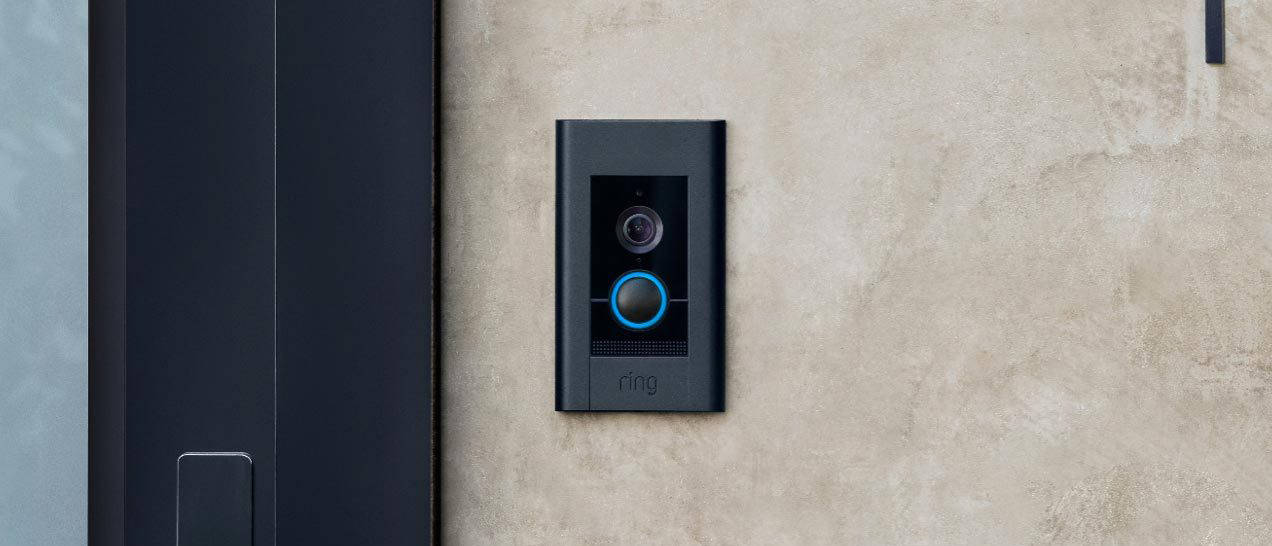Top Ten Reviews Verdict
The smartest-looking smart doorbell, the Ring Video Doorbell Elite can sit flush making it look less like a bit of technology and more like it belongs on the front of your house. High-quality video and an Ethernet connection make this one of the best doorbells that you can buy but the high price and more difficult installation will put many off.
Pros
- +
Looks great
- +
Ethernet connection is very reliable
- +
Top video quality
Cons
- -
Expensive
- -
Hard to fit
- -
Quite wide
Why you can trust Top Ten Reviews
Ring Video Doorbell Elite: What you need to know
You certainly can’t accuse Ring of not having enough choice in its doorbell line-up, but at almost twice the price of any of the other models, the Ring Video Doorbell Elite sets itself out as something quite different.
Designed for homes where style is everything, the Ring Elite is the only product in the line-up that can sit flush. And, it’s the only Ring doorbell that can use Ethernet, rather than Wi-Fi, providing a more stable and faster connection.
As well as the price, the other main issue is installation, as this product is far more complicated to install than the competition. Really, this is a product aimed at professional installers or those completing new builds.
Even with those caveats, the Ring Video Doorbell Elite is just about the best doorbell that you can get, and thanks to that Ethernet connection, it’s fast to transfer calls to your phone, too. If you can stomach the expense and the installation you won’t be disappointed, but for most people, one of the other products will make more sense.
Ring Video Doorbell Elite: Features
- Motion and people detection
- Two-way talk via Echo speakers
- Motion Zones
Resolution: 1080p recording
Camera lens: 160-degree
Night vision: Yes
Recording options: Cloud via subscription
Two-way talk: Yes
WiFi: 802.11n, Ethernet
Inside the Ring app, the Elite appears and acts like any of the other doorbells in the line-up. Fire up the app and you can see the doorbell, complete with a fresh thumbnail view showing you what the camera can see.
As well as telling you when people press the doorbell, the Elite acts like a security camera, recording motion-triggered clips. As this model is permanently powered, motion detection uses the camera’s feed, rather than a PIR motion sensor. This gives the Elite a major advantage over its battery-powered brothers as you can define Motion Zones.
Motion Zones are areas of the image that you want to monitor; only when motion is detected here, it triggers an alert and recording and all other motion is ignored. If you live on a busy street, Motion Zones can be a real lifesaver, cutting down on the number of alerts that you get.
Sign up to receive the latest news, reviews, buying guides and deals direct to your inbox
More recently, Ring has introduced its People Only Mode, which sets the camera to only record and send an alert when people are detected. It would be nice if you could separate the alert from the recording, say recording all motion but only sending alerts when a person is detected. That way, if the camera fails to recognise a person you still get the recording.
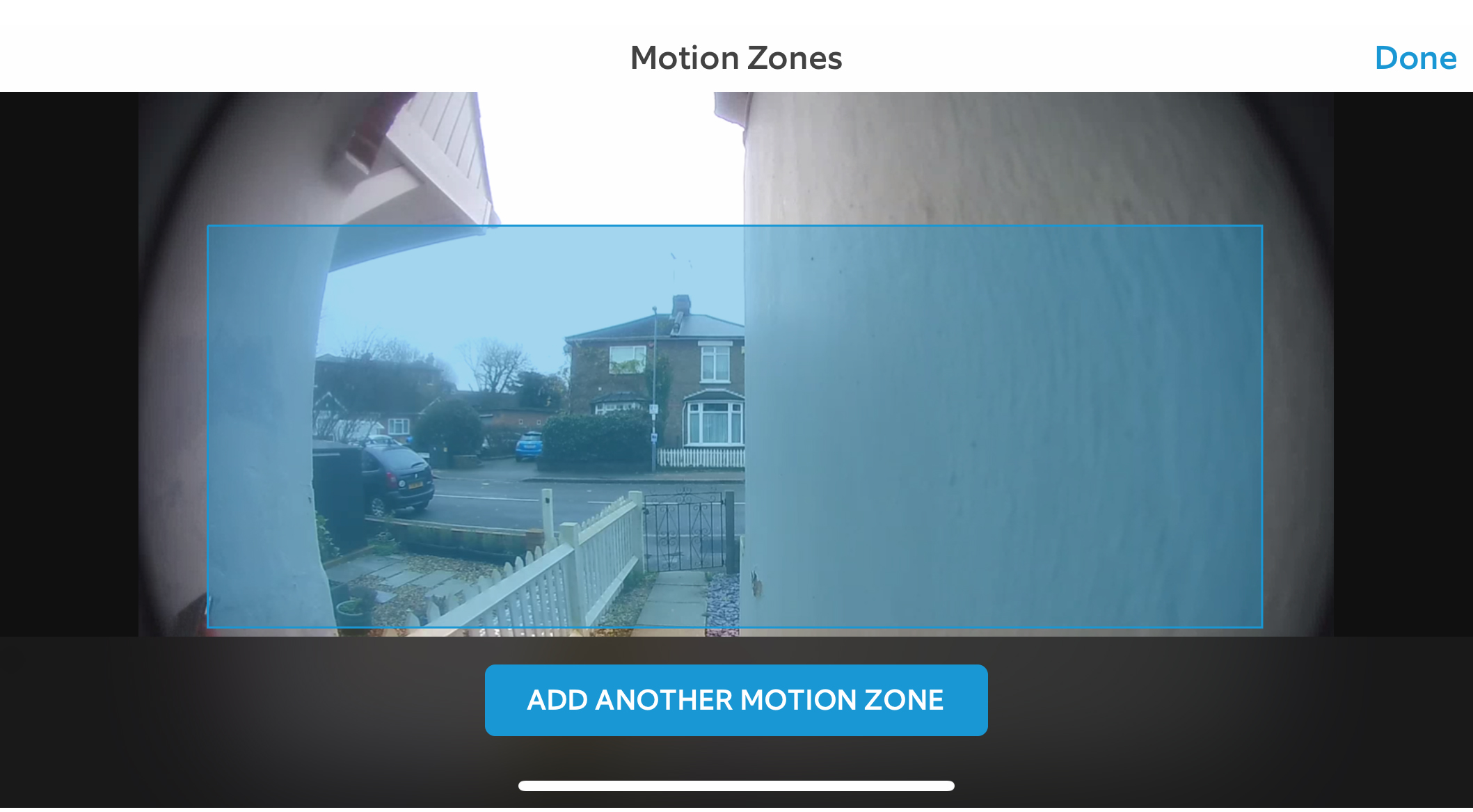
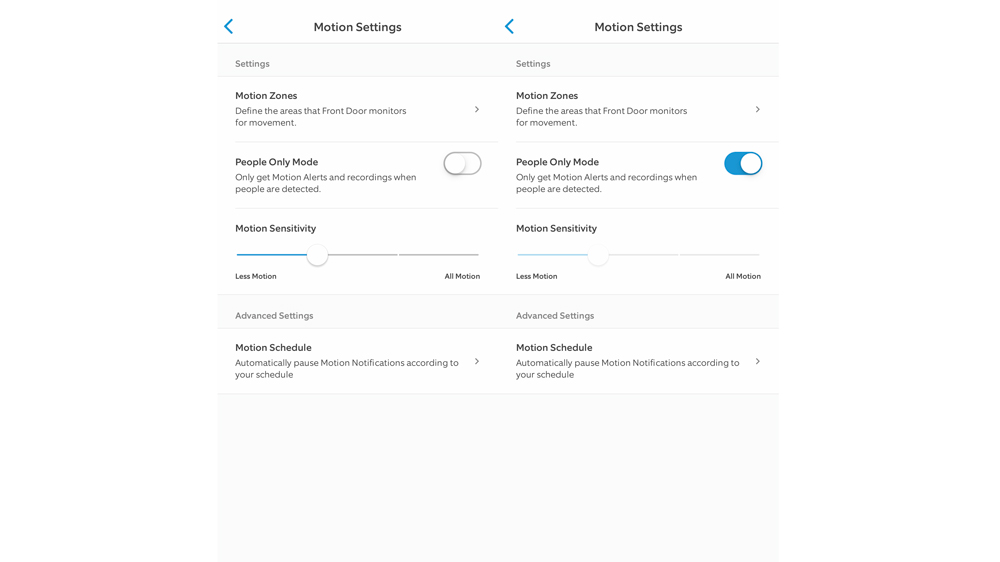

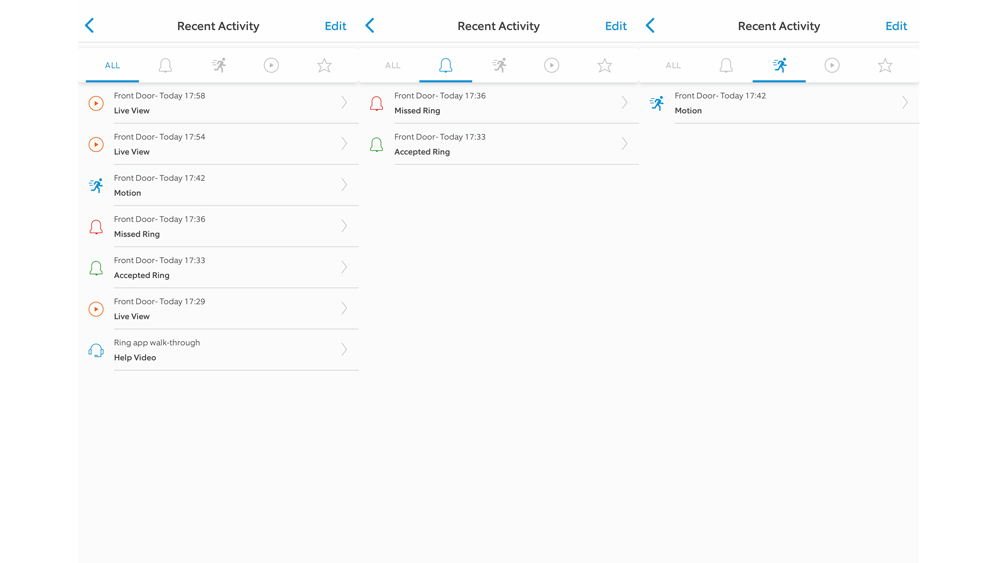
We like the Motion Snooze option, which lets you stop alerts coming through for 30minutes, or one, two, three or four hours. If you’ve got people going in and out a lot, such as delivery men, then this setting stops your phone going crazy with alerts.
You can also set a Motion Schedule, which lets you decide when the Ring app can send notifications, but recordings happen all of the time. Likewise, you can manually disable all motion alerts, although recordings continue as normal. On a security camera, particularly an indoor one, these slightly limited options can be annoying, ending up with loads of clips of you walking around your home, but on a device that’s outside, we’d never disable motion recording.
Via the Linked Devices option, you can trigger other Ring cameras to spring into action when the Elite detects motion. For example, if you have a Ring Floodlight Cam, you can get it to turn its light on (between certain hours) and record a clip. Just be careful how you use these rules, because if your Elite picks up a lot of motion you can potentially add a lot of additional video clips.
All clips are saved to the cloud if you have a Ring Protect paid-for plan. These are well priced and cost $3 a month ($30 annually) for the Protect Basic Plan, which gives you 60-day history for one camera. Upgrade to Protect Plus ($10 a month or $100 annually) and you get 60-day history for all Ring cameras and professional monitoring for the Ring Alarm system. That really is excellent value.
If you don’t want to pay, then you can use the Video Doorbell Elite for free: it won’t record video but it will send notifications to you and let you answer the door.
There are two ways to view recorded footage. As with the other doorbells and cameras if you tap the camera you get into the timeline view. From this, you can scroll back through the timeline to see events that have taken place. If you’ve had a lot, then this can take quite a bit of scrolling to do, although you can use the Filter view to change which events you want to see (Rings, Motion, Live View or Starred). Strangely, you have to select one clip first before you can access the filter.
Dive into the Settings menu and you get the Event History option which gives you a list of events. That’s a bit easier to navigate and gives you the filtering options, but this view could really do with thumbnails to make it easier to find a particular clip. Once you’ve found a clip that you want, you can download it to your phone (or computer if you use the web interface), preserving clips as evidence.
At any point, you can view the live stream from your doorbell, which also triggers a recording. Once on the live screen, you can use the options to turn on audio and to turn on two-way chat.
More likely, the way you’ll use the Elite is when someone presses the doorbell, in which case an alert is sent to your phone. Tap the alert and the app opens up so that you can answer your doorbell. If you hold your phone in portrait mode, you’re taken to the live view mode and have to tap the microphone to answer; if you hold your phone in landscape mode, you get proper answer/hang-up buttons.
As well as answering from your phone, you can answer via any Amazon Echo device, which will also broadcast that somebody is at the door. With the smart speakers, you can’t see who’s at the door but you can have a chat with them. If you have an Echo Show, you can tell Alexa to answer the door, where you can see the video feed. We slightly prefer the way that the Nest Hello works with a Google Assistant smart display: when the doorbell is pressed the smart display shows the feed immediately, giving you a chance to hang-up or ignore the person who’s there. However, you can’t currently answer the Nest Hello from a Google smart speaker.
Ring Video Doorbell Elite: Design and build
- Sits flush with a wall
- Powered via Ethernet
- Requires a hollow wall to fit the deep mounting bracket
The Ring Video Doorbell Elite is just as chunky as its siblings, only in this case the bulk of the doorbell is designed to sit inside a wall, leaving the doorbell to sit flush. That means that installation is a lot trickier with this model than with any other Ring device. Be aware that at 4.80 x 2.75 x 2.17-inch, the Elite is wider and taller than the other models in the line-up, so make sure that you have enough room by your door.
To fit this model, you have to first fit the mounting bracket to the wall. This plastic box is designed to sit inside a hollow wall, with two clamps holding it into place. The doorbell then screws onto this.
Ring thoughtfully provides a choice of four faceplates in the box, giving you a choice of how your doorbell looks when installed. Faceplates are secured to the doorbell via a Torx screw and Ring provides the necessary screwdriver in the box for you.

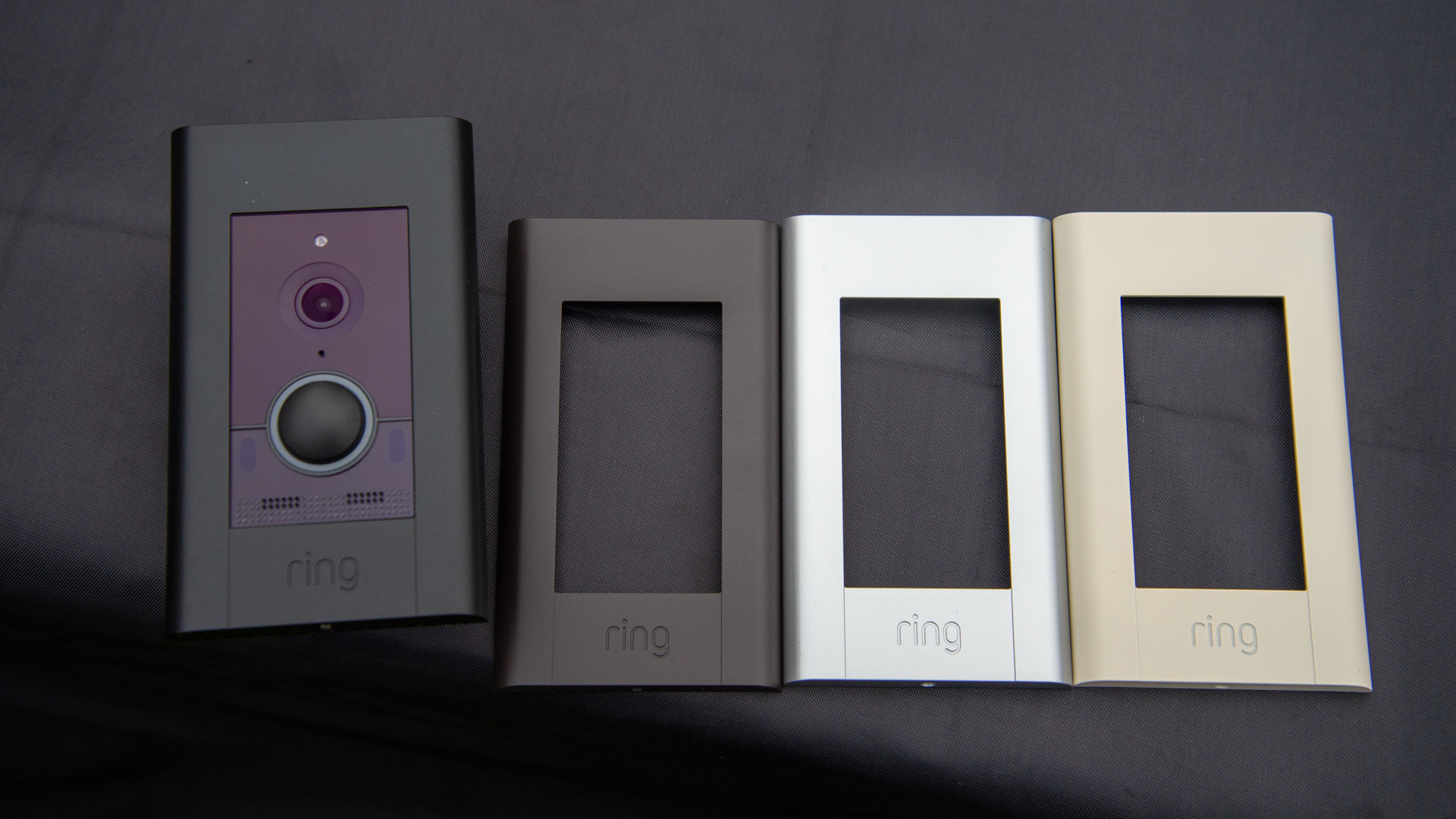


Power is provided via Power over Ethernet (PoE). There’s a PoE adaptor in the box, which takes power in and a connection from your router on one end, and then runs a separate Ethernet cable to the doorbell for power and data. If you don’t want to plug this adaptor into your router, you can forgo that connection and use the Elite’s 802.11n Wi-Fi instead. You’d be mad to do this, as you have to run the Ethernet cable to the doorbell anyway, and this connection is far more reliable than Wi-Fi.
If you’ve got an existing doorbell, you can connect its cables to the ports on the back of the Elite. That way, when the doorbell is pressed your internal bell can ring, too.
Once installed, the Ring Elite looks neater and less like a bit of tech than any of its competitors. If you’re proud of the outside of your house and want a product that blends in, then this is the best video doorbell. Once the doorbell is up and powered, you can install it following the instructions in the Ring app. It takes a few minutes to get it up and running.
Ring Video Doorbell Elite: Performance
- Rings come to phone very quickly
- Bright and clear daytime video
- Excellent color night vision in the right circumstances
Having a wired connection makes a big difference in terms of how quickly notifications come through to your phone. We’re used to waiting up to 30 seconds with a traditional smart doorbell, but we found that the Ring Video Doorbell Elite was much quicker and notifications that somebody was at the front door came through much quicker in a matter of seconds. That can make the difference between a courier being in their van ready to make a getaway and you being able to answer the door.
Ethernet still has plenty of advantages over Wi-Fi it seems. Thanks to that Ethernet connection you also don’t have to worry what Wi-Fi performance is like through your external wall, as it simply doesn’t matter.
Speaking to someone at the front door is easy, with audio and video clear to see. The speaker on the Video Doorbell Elite is good, too, making it easy for the person on the other end to hear what you’re saying.
Video performance is similar to that of the Ring Video Doorbell Pro thanks to the Full HD sensor. As with the Pro, there’s no HDR image processing. You get a good field of view thanks to the 160-degree lens in the camera, although there’s a bit of fisheye going on.
During the day when there’s plenty of light, the video is clean and sharp with plenty of detail in people’s faces. If your front faces the sun, then the video can look a touch overexposed in areas and the backlighting can remove some detail from faces - the downside of not having HDR.

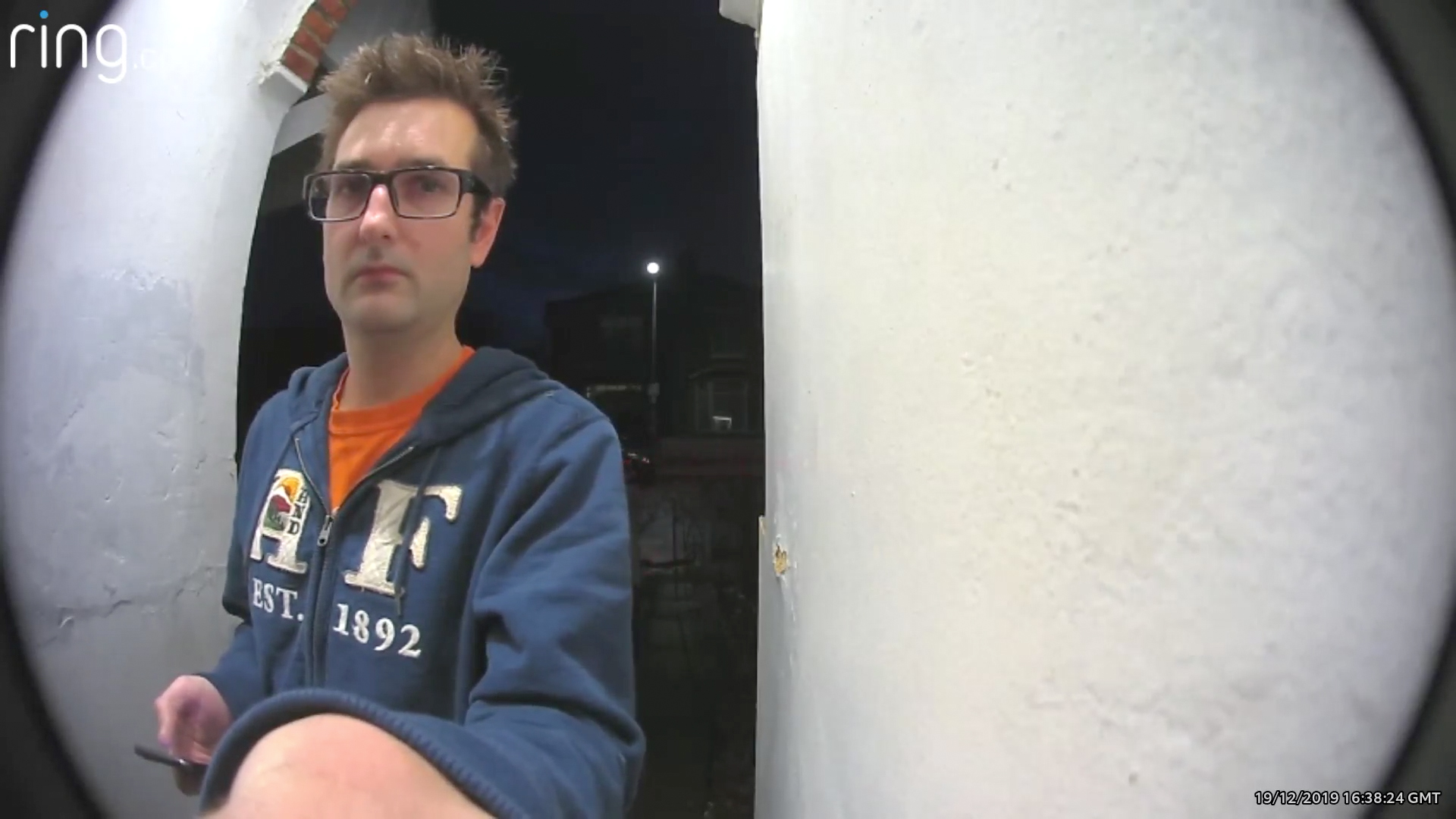
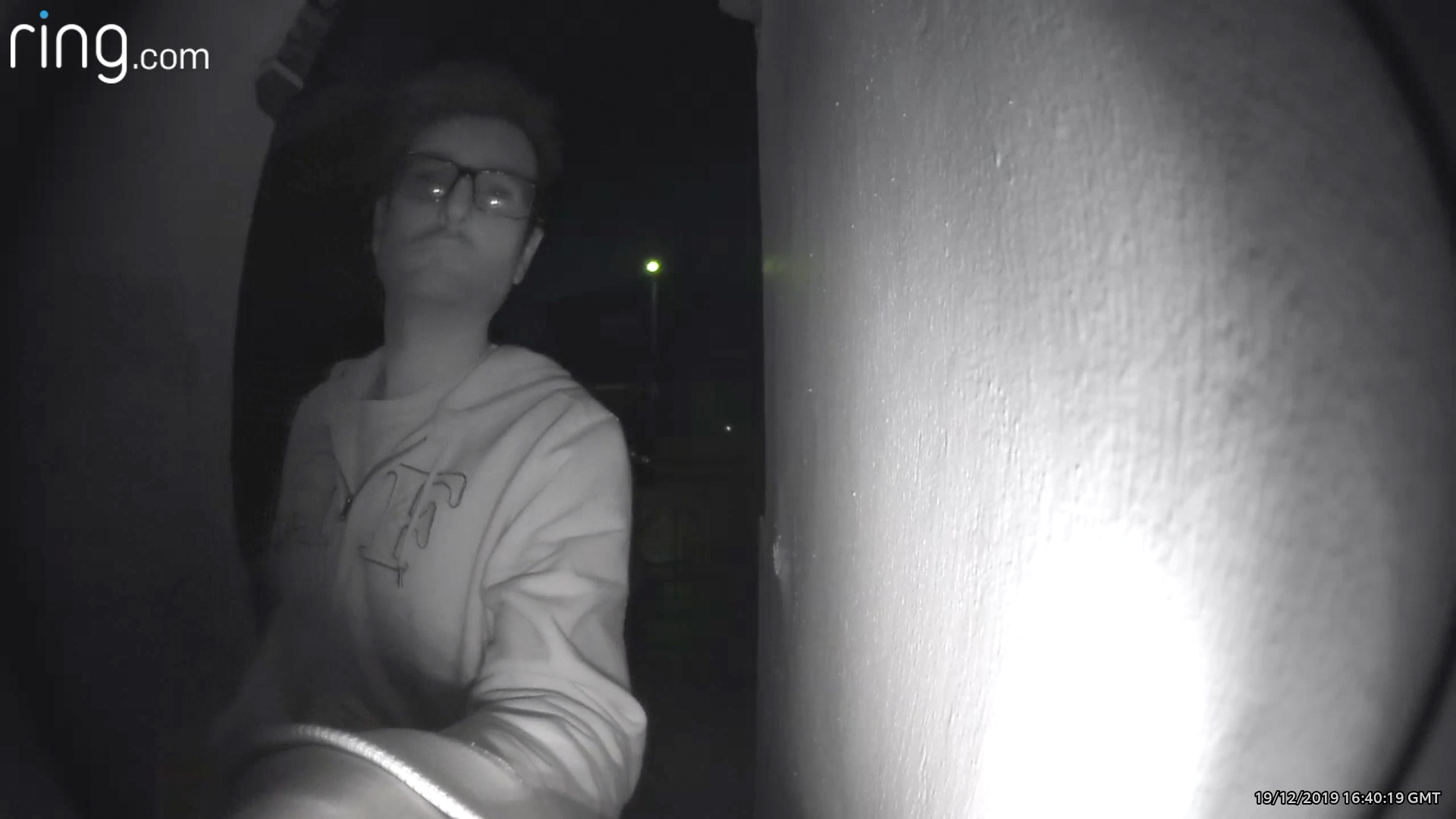
At night, the camera can use color night vision, using a combination of its color sensor and IR sensors. How well this works depends on how much light there is: a good reason to install a security light, either a traditional one or a smart one, such as the Ring Floodlight Cam. With the right amount of light, the video at night looks fantastic with far more detail than you get with a traditional camera.
If there’s not enough light, you get a softer black and white image, as with other cameras. There’s still enough detail to see what’s going on but people’s faces get slightly obscured and the image is far softer.
Ring Video Doorbell Elite: Verdict
Given the high price of the Ring Video Doorbell Elite, the truth is that most people will be better off with the Ring Video Doorbell Pro, which has all of the same features bar Ethernet and is also permanently powered.
That’s not to say that the Elite is pointless, though. If you want a flush-fit doorbell, then you don’t have any other options, and if you want the stability and speed that Ethernet brings, then the Elite is once again the best choice. It’s more that this product is very niche. If it’s something that you specifically want, you’ll be happy with it; but if budget outweighs looks, go for the Ring Pro instead.
David has been working in technology journalism since 1998 and has been editor of Computer Shopper and Expert Reviews in the past, before he started writing for the Top Ten Reviews brand. He is also an expert on home appliances, kitchen gadgets, home security and smart home products, which he reviews for Top Ten Reviews.
